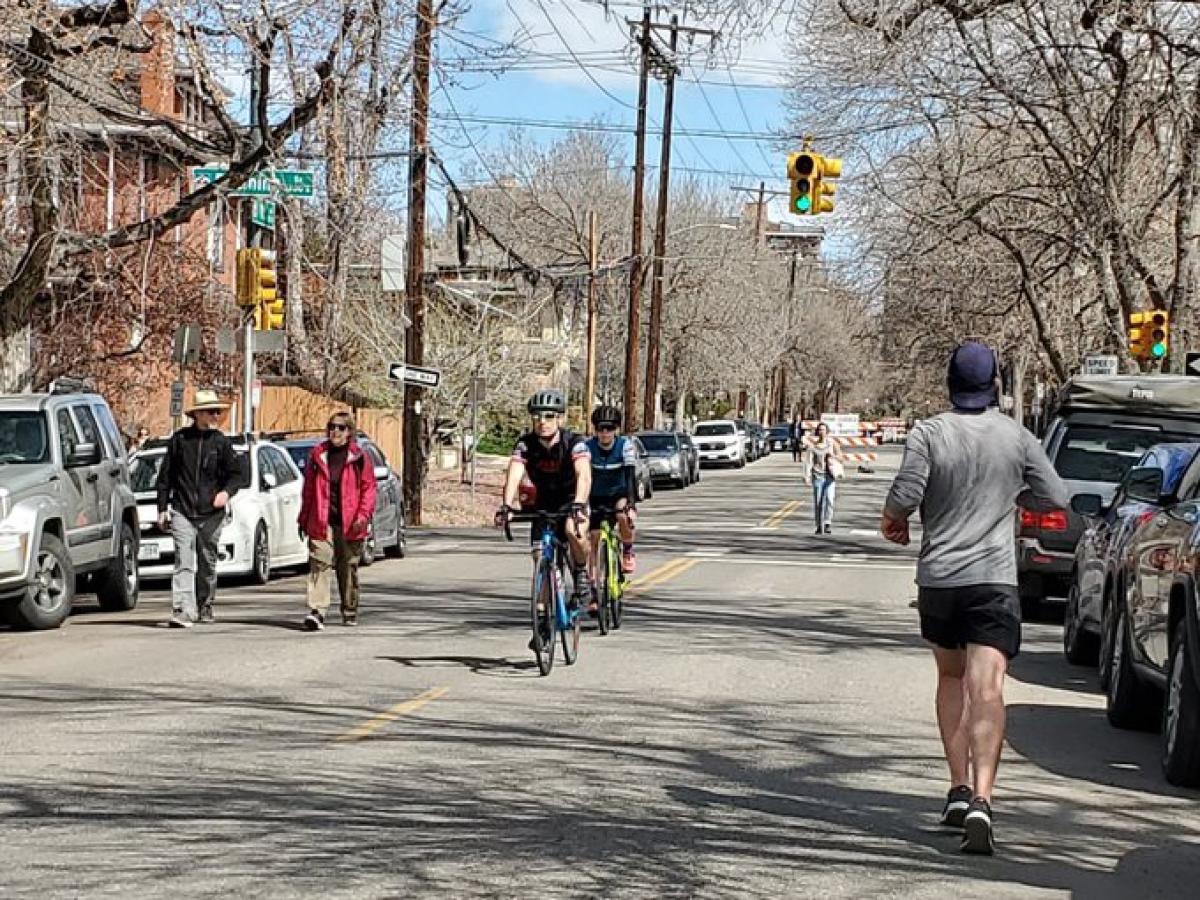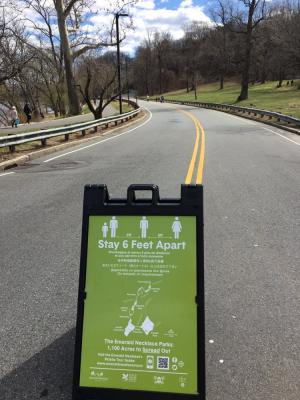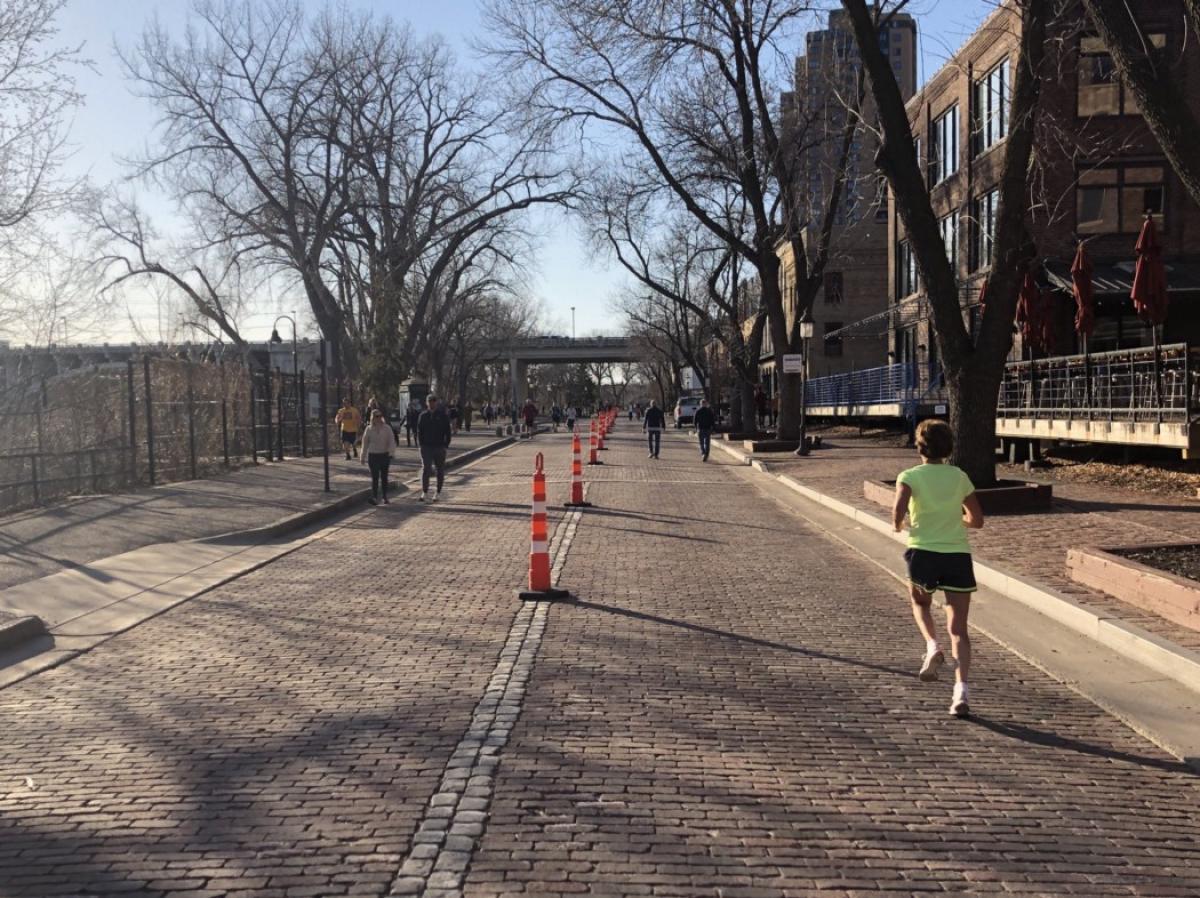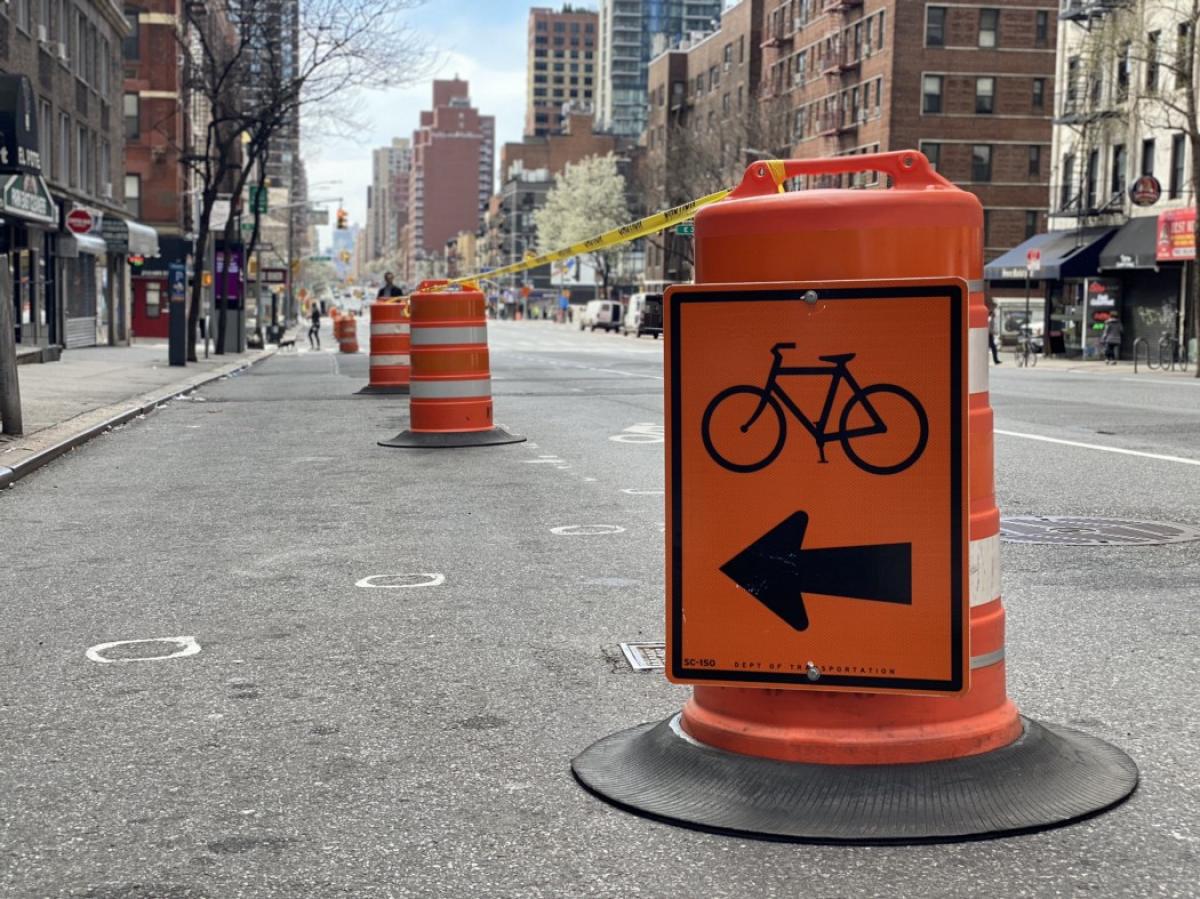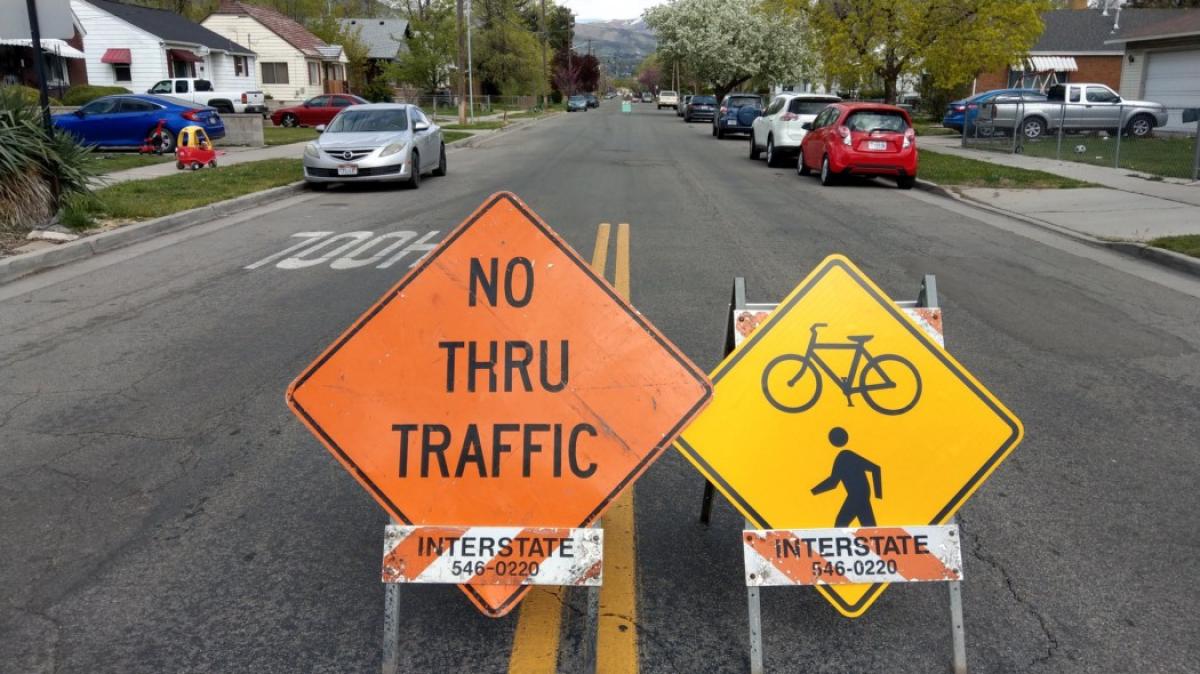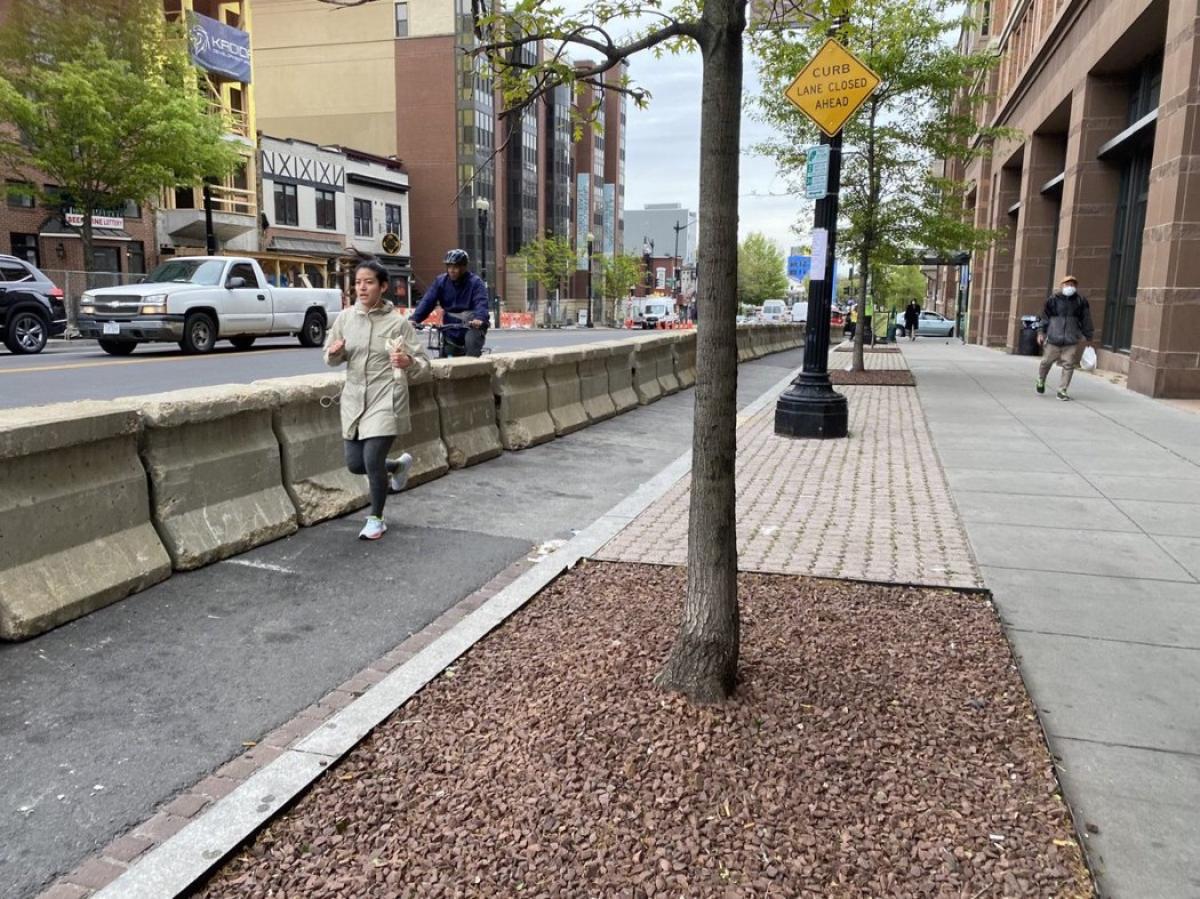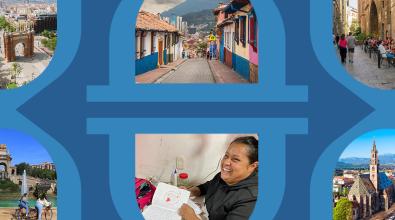How cities can use streets to bolster social distancing
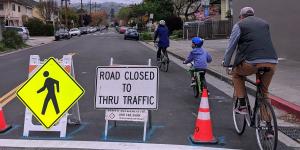
On city sidewalks, the math of social distancing simply doesn’t add up.
Pedestrians are supposed to keep six feet apart from each other. But sidewalks in many urban neighborhoods are as little as five-feet wide, and often narrower if they are present at all.
That’s one reason why a growing number of cities are beginning to open streets to pedestrians, as well as bicyclists, during the COVID-19 crisis. Even when complying with stay-at-home orders, urban dwellers need to get to jobs deemed essential, exercise, go to the grocery store, walk dogs, or simply get a breath of fresh air.
How cities are managing these open-street efforts was the subject of a recent webinar organized by the National Association of City Transportation Officials.
Jay Decker, Denver’s Transportation Innovation Manager, explained how his city is limiting through traffic on a growing number of streets in order to give residents more room to practice safe social distancing outdoors. And Nicole Ferrara of the Oakland, Calif., Department of Transportation, discussed her city’s plan to open 74 miles of roadways to bikes, pedestrians, wheelchair users and local vehicles. (You can watch the replay of the webinar here, and check out NACTO’s full database of transportation-related city responses to the COVID-19 crisis here.)
Here are six lessons from the work in Denver and Oakland so far.
Choose locations wisely
While opening streets to pedestrians and bicyclists can be a very light and quick intervention, it does require some planning. To decide where to target its street efforts, Denver looked closely at several layers of data — for example, data on where parks were too crowded, where parks are few and far between, and where equity concerns are greatest. Denver is prioritizing streets where traffic volumes were already low and have dropped even more, and the city is avoiding commercial districts where businesses might need auto access for drive-up pickups and deliveries.
Oakland, meanwhile, relied on a recently completed citywide bicycling plan that had already identified 74 miles of mostly neighborhood streets suitable for biking. In both cities, there’s a real emphasis on creating open-space opportunities close to where people live. “We’re trying to support people in the behaviors they’re already doing in their neighborhoods,” Ferrara said. “How can we help people find space in their own community, rather than coming to a central park area?”
Be careful about messaging
When cities restrict street traffic in normal times, the purpose might be to encourage socializing at a block party or street fair. That’s not the case with COVID-19-related closures, where social distancing is the goal. There’s also nuance to convey where streets are mostly given over to pedestrians and bicyclists, but remain open for local auto traffic or deliveries. That’s why Oakland calls its program “Slow Streets” and refers to traffic restrictions as “soft closures;” Denver calls its program “Temporary Recreation Streets,” or “T-RECs.”
“These are not ‘closed’ streets, because they are open for local access,” Decker said. “And as far as communication goes, we really wanted to hammer that this was not a typical open street event or a street closure. It’s more in the realm of a ‘shared street,’ where everyone is expected to go slow and pay attention to the different modes.”
Act quickly — and in phases
In an anxious time where residents are hungry for change, creating street space for people to get outside safely is a tangible improvement in peoples’ lives that cities can make quickly. The trick is to start small, learn quickly, and scale up from there. Oakland announced its Slow Streets program on the Friday before Easter and had a pilot underway on the first 4.5 miles within 32 hours. Another 4.6 miles were added a week later, and more are on the way.
Denver also moved fast, moving in phases that allow the city to plot and implement three or four new street corridors per week. “We did this in about a week’s time from inception of the idea to getting the first phase out,” Decker said. “It proves that during a crisis, you can get movement and mobilize to have big results if it’s a priority.”
Engage the community
Oakland’s effort has been supercharged by volunteers who are helping publicize Slow Streets within neighborhoods, report when traffic barriers need maintenance, and take photos to track the project’s impact. As the city rolls out new waves of soft closures, leaders are surveying community members about the program as a whole as well as specific streets proposed for inclusion.
“The input has been great,” Ferrara said. “It’s often things we wouldn’t have known, like, there’s a meat packaging factory on one of these streets so there’s a ton of trucks. Things you only really know if you live there.”
Have a plan for maintenance
Streets don’t close themselves. Barricades and road signs need to be put out — and put back in place when residents move them. It doesn’t have to be a huge lift but it does need to be planned for. Denver is using some of its own materials as well as some from a contractor, and has redeployed traffic-enforcement officers to help in the effort. Oakland rented its barriers to get started quickly and is looking to its street maintenance crews for upkeep. Volunteers have been helpful in reporting barriers that are down and require attention.
Evaluate the results
Denver uses traffic cameras, manual counts, and other approaches to estimate the number of people using temporary recreation streets. So far, the results are impressive. One street, 16th Avenue, is seeing roughly 1,000 users a day on weekdays — usage is highest around the end of the work day — and 1,400 on weekends. Oakland hasn’t made completed formal counts yet but is looking at photo documentation from volunteers, community survey results, and police crash reports. “The outcomes are really positive overall,” Ferrara said. “People have been really compliant with social distancing. Speeding hasn’t been a big issue. And people are really demanding more miles of these streets. So we’ve got ourselves in a pleasantly tough situation where we now have to roll out more.”
